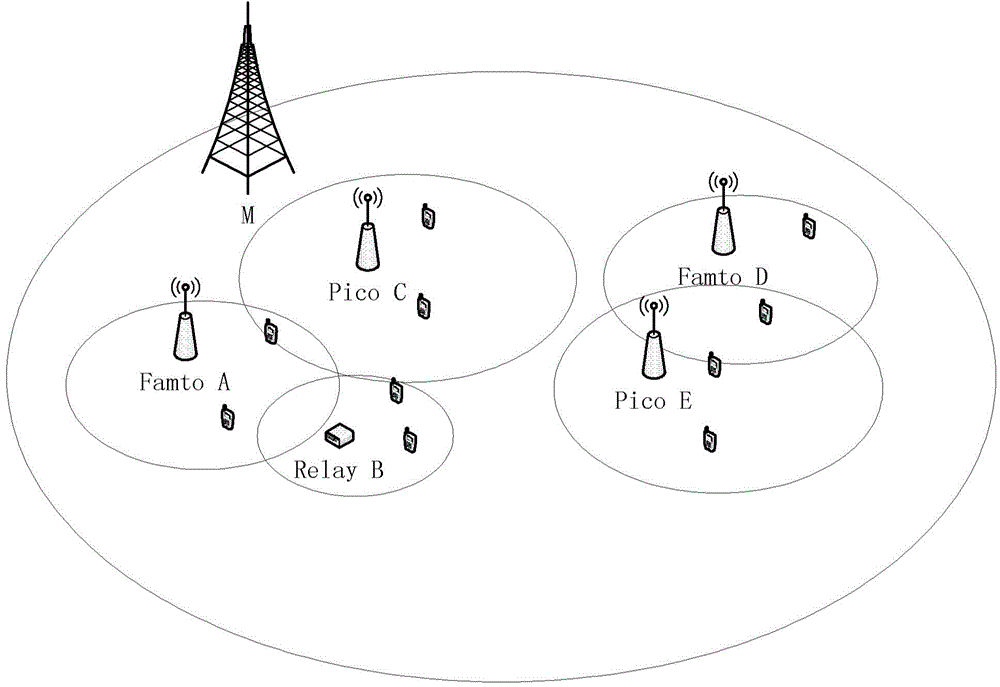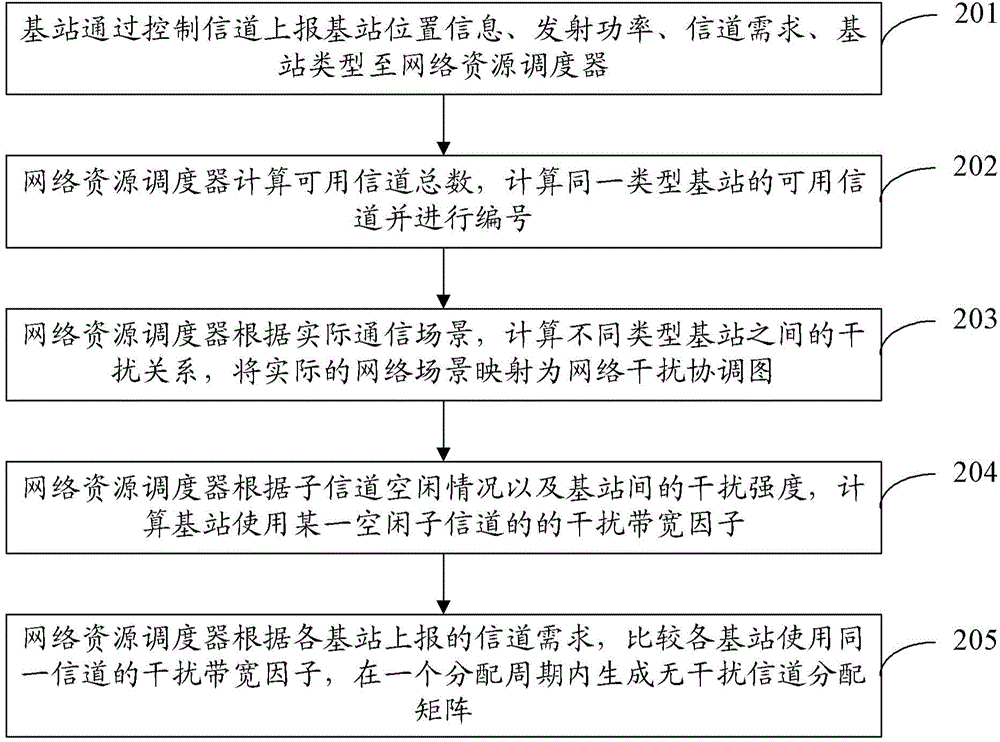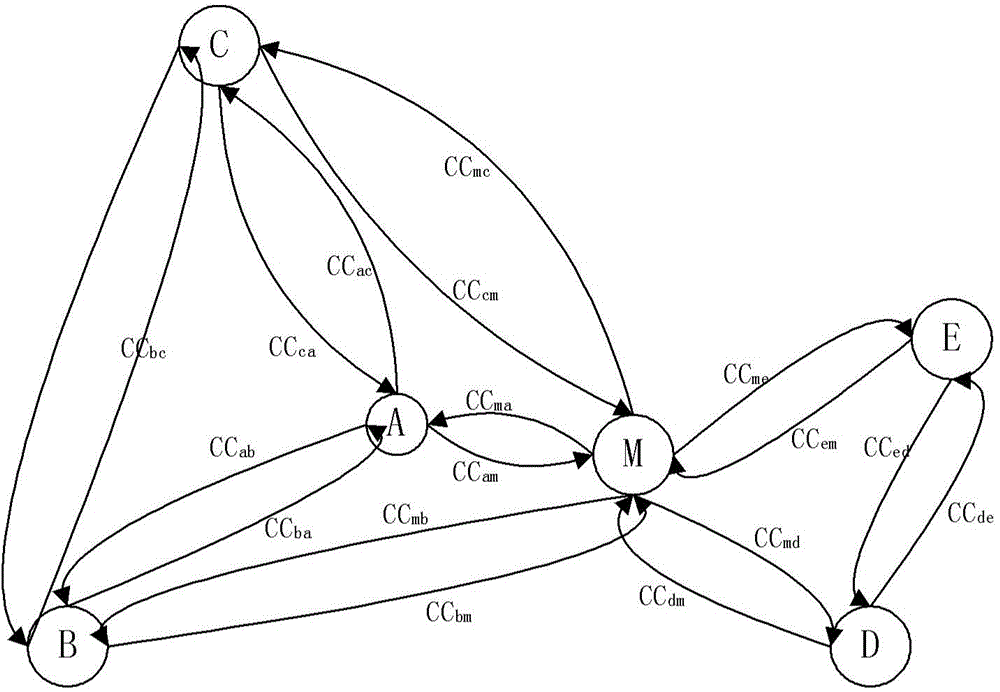Heterogeneous network frequency spectrum resource distribution method and apparatus
A spectrum resource allocation, heterogeneous network technology, applied in the field of mobile communication, can solve problems such as not adapting to actual needs
- Summary
- Abstract
- Description
- Claims
- Application Information
AI Technical Summary
Problems solved by technology
Method used
Image
Examples
Embodiment 1
[0078] Embodiment 1: In this example, spectrum allocation is performed with network benefit maximization as the objective function
[0079] This embodiment provides a heterogeneous network spectrum resource allocation method, the application scenario is as follows figure 1 As shown, K different types of macro base stations and low-power node base stations with different service radii are overlapped and arranged in the same area, and the shared core network provides a total bandwidth of BW total spectrum resources. Scheduling of heterogeneous network multi-granularity spectrum resources based on user demand feedback, the specific process is as follows figure 2 shown, including:
[0080] In step 201, the base station reports base station location information, transmission power, channel requirements, and base station type to the network resource scheduler through a control channel.
[0081] Step 202, the network resource scheduler calculates the total number of available cha...
Embodiment 2
[0125] Embodiment 2: The embodiment considers three types of base stations
[0126] In this embodiment, the heterogeneous network model is determined as a three-layer heterogeneous network composed of three types of low-power base stations: Famto, Pico, and Relay. The layers are distributed in an area of 1000m×1000m, and the total bandwidth of the system to be allocated provided by the core network is shared. BW total =20MHz. The network multipath transmission model conforms to the Rayleigh distribution.
[0127] An embodiment of the present invention provides a heterogeneous network spectrum resource allocation method, using this method to complete the resource allocation process as follows figure 2 shown, including:
[0128] In step 201, the base station reports base station location information, transmission power, channel requirements, and base station type to the network resource scheduler through a control channel.
[0129] Three types of access network communicat...
Embodiment 3
[0139] Embodiment 3: This embodiment considers that the channel has not been invoked
[0140] This embodiment provides a heterogeneous network spectrum resource allocation method for heterogeneous network multi-granularity spectrum resources based on user demand feedback, which is different from Embodiment 2 in that when generating channel numbers, all channel calculation numbers are from The division starts from the left end of the frequency band. If the available bandwidth is not an integral multiple of the service bandwidth, the frequency band at the rightmost end of the available bandwidth cannot be called (such as Figure 6 Shown in the shaded area in the middle), resulting in low usage efficiency and waste of frequency bands. In this example, the cross numbers at both ends of the frequency band to be allocated are used to divide the channels, as shown in the attached Figure 10 shown in . The shaded area in the figure shows the remaining bandwidth after the allocated b...
PUM
 Login to View More
Login to View More Abstract
Description
Claims
Application Information
 Login to View More
Login to View More - R&D
- Intellectual Property
- Life Sciences
- Materials
- Tech Scout
- Unparalleled Data Quality
- Higher Quality Content
- 60% Fewer Hallucinations
Browse by: Latest US Patents, China's latest patents, Technical Efficacy Thesaurus, Application Domain, Technology Topic, Popular Technical Reports.
© 2025 PatSnap. All rights reserved.Legal|Privacy policy|Modern Slavery Act Transparency Statement|Sitemap|About US| Contact US: help@patsnap.com



